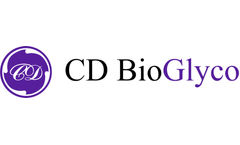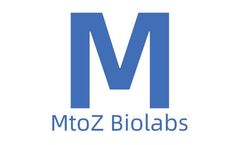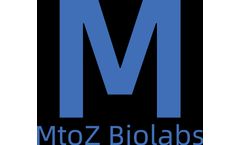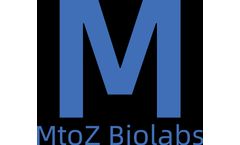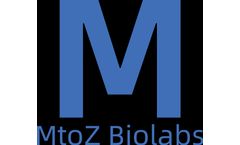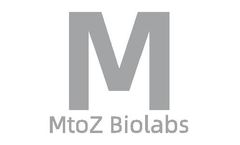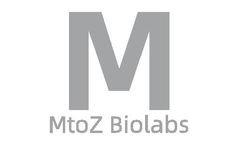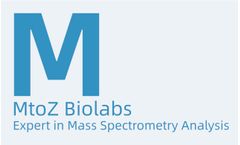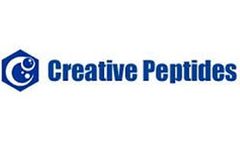Drug Design With Structure Based Drug Design Articles & Analysis: Older
61 articles found
Compared with small molecular drugs, recombinant protein drugs offer advantages such as high activity, high specificity, and low toxicity, and are therefore favored by researchers. ...
What Is PROTAC Technology? Proteolytic targeting chimera (PROTAC) is a new type of drug design technology that works by inducing the degradation of target proteins. Unlike conventional small molecules that typically inhibit protein function, PROTACs facilitate the ubiquitination and subsequent degradation of specific proteins. This bifunctional molecule consists of two distinct elements: a ...
Microarray technology can be used to identify which glycan structures are recognized by immune cells or antibodies, helping researchers design vaccines that elicit a robust immune response. ...
Alfa Cytology has introduced its advanced drug development services for brain tumors. Alfa Cytology, celebrated for its cutting-edge biotech solutions and extensive tumor research expertise, has recently introduced brain tumor drug development services, designed to empower researchers in understanding the intricacies and unique challenges associated with brain tumors. Brain tumors represent a ...
These drugs are usually precisely designed protein molecules that can specifically bind to targets in the human body, such as specific molecules on pathogens or diseased cells, thereby guiding the attack of the immune system or directly blocking the pathological process. ...
Glycosylation modification is a chemical modification process on biomolecules, involving the combination of sugar molecules with other biomolecules (usually proteins). This modification process plays a crucial regulatory role within the organism, particularly in terms of protein function and stability.Glycosylation modifications also impact antibodies, manifested in the following ways:Antibody ...
When we talk about antibody sequencing, we often think of issues related to disease treatment and improving human health. Nanobody sequencing provides us with a more precise and efficient solution. Nanobodies, also known as single-domain antibodies, are antibodies composed of a single functional domain. They have the advantages of small size, high stability, and good penetration, and therefore ...
Difficult to Target Antigens and Novel Drug TargetsDifficult-to-target antigens and novel drug targets are major challenges in antibody discovery and antibody drug design. ...
Customized AntibodiesPersonalized antibodies can be targeted at specific diseases, minimize side effects, and improve patient treatment results.Drug Design Optimization1. Protein 3D StructureMore and more protein structure information is being determined as potential drug targets, and protein structure is used as the basis for ...
They are currently a focus in new drug development. The design of antibody drugs is a complex and delicate process, and its success often depends on a deep understanding and precise analysis of the antibody itself. ...
Circular Dichroism (CD) uses the absorption properties of optically active substances to analyze the molecular structure of drugs. It has very valuable applications in drug analysis, including:1. Identification of Drug StereochemistryMany drug molecules are chiral, and their activity, metabolism, and toxicity can significantly differ due to stereochemistry. CD can differentiate the different ...
The detection of mRNA capping rate is an experimental procedure used to evaluate the frequency and efficiency of the addition of cap structures to messenger RNA (mRNA) molecules. This cap structure is a special chemical modification, which is crucial for the stability and translation efficiency of mRNA.Biological Importance of mRNA CappingmRNA capping is a key post-transcriptional modification ...
Identifying Conservative Regions and Specific Sequences Secondary Structure Prediction 1. Predicting Protein α-helices, β-folds, and Turns Based on the Amino Acid Sequence 2. ...
The services tend to accelerate the discovery and optimization of molecule drugs with a strict quality control system. Small molecule drugs are characterized by their low molecular weight and simple chemical structures. These properties confer several advantages, including the ability to easily pass through cell membranes and the predictability ...
Another powerful tool in the drug designer's arsenal is fragment-based drug design (FBDD). This method leverages the use of small, low-molecular-weight fragments that can bind to specific target proteins. ...
The antibody component specifically targets surface antigens on specific cancer cells, while the drug component is responsible for killing these bound cancer cells. The design goal of ADC is to deliver the drug directly to cancer cells, thereby minimizing the impact on normal cells.DAC is an emerging drug design ...
Introduction In the world of molecular interactions, understanding the forces that drive binding events is crucial for advancing scientific research and developing new therapies. One powerful technique that has revolutionized the study of molecular interactions is Microscale Thermophoresis (MST). In this blog post, we will delve into the world of microscale thermophoresis, exploring its ...
Since the 1990s, computer methods such as homology modeling, molecular docking, quantitative structure-activity relationship and molecular dynamics simulation have been used for drug development. ...
Despite its crucial role as a versatile building block in drug discovery, the formation of DKP reactions is highly undesirable in the production of peptide drugs. DKP formation can occur during the process of peptide drug formulation, as well as in the storage of starting materials and finished products, and may even occur under solid phase ...
Microspheres play a crucial role in the field of pharmaceuticals, biotechnology, and materials science due to their unique properties and applications. These spherical particles, ranging from a few micrometers to several millimeters in size, have a wide range of uses, including drug delivery systems, cell encapsulation, and as supports for various chemical reactions. Polymeric microspheres, ...



